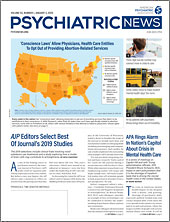Though health care spending in the United States vastly exceeds that of other countries, an increase in the number of deaths due to suicide, drug overdoses, alcohol abuse, and organ system disease has lowered the probability that Americans will reach age 65.
Life expectancy started to decline in 2015, halting a nearly 60-year increase, according to a study published November 26, 2019, in JAMA. A major contributor to the decline was an increase in mortality from specific causes such as drug overdose and suicide among young and middle-aged adults.
“The problem really isn’t new,” said lead author Steven Woolf, M.P.H., a professor at Virginia Commonwealth University and director emeritus of the university’s Center on Society and Health. “It’s been decades in the making.” The decline in the health of people living in the United States began in the 1980s, he explained, and rates of midlife death (defined as occurring between age 25 and 64) began to increase as early as in the 1990s. Now the number of midlife deaths has become so substantial that they are bringing down the overall probability of dying, he said.
Woolf and colleagues analyzed life expectancy data collected by the Centers for Disease Control and Prevention and cause-specific mortality rates listed in the U.S. Mortality Database from 1959 to 2017.
The analysis revealed that from 1959 to 2016, U.S. life expectancy increased from 69.9 years to 78.9 years. The rate of increase was greatest from 1969 to 1979, plateaued in 2011, and decreased after 2014, the authors noted. From 2010 to 2017, age-adjusted all-cause mortality rates increased by 6% in those aged 25 to 64 years. The authors noted several changes in the rates of midlife mortality:
•
From 1999 to 2017, midlife mortality from drug overdoses increased by 386.5%.
•
The suicide rate among individuals aged 25 to 64 years increased by 38.3%, and 55.9% among individuals aged 55 to 64 years. (Suicide rates also increased among those younger than 25 years.)
•
The midlife mortality rates for hypertensive diseases increased by 78.9% and 114.0% for obesity.
The authors noted some limitations to their study, including that mortality data are subject to errors such as race misclassification, undercounting, and inaccurate causes of death. Coding could result in errors, as well, such as inaccurately categorizing suicides as overdoses.
The study findings, Woolf said, are not just statistical details. “It means that our children are going to live shorter lives,” he said. “It means they are currently losing their parents. It means employers are losing their workers, and it makes U.S. businesses less competitive. This is not a trivial issue.”
Michelle P. Durham, M.D., M.P.H., an assistant professor of psychiatry at Boston University School of Medicine and member of APA’s Council on Advocacy and Government Relations, said the study findings are not surprising. Larger, systemic problems, such as difficulties accessing health care and increasing costs of living without similarly increasing wages, create a trickle-down effect. “You start seeing social isolation, difficulty concentrating, lower moods, and difficulty sleeping,” she said. “That translates, unequivocally, into mental and physical health issues.”
The number of people struggling with addiction and suicidal ideation will continue to climb without effective prevention measures, many of which must take place outside the realm of health care, said Patrick Runnels, M.D., associate chief medical officer of population health at University Hospitals in Cleveland and chair of APA’s Council on Advocacy and Government Relations. Though mental health professionals cannot fix the circumstances in which their patients live, they should raise awareness for what they’re seeing in their patients’ lives, he said.
A psychiatrist’s job is to listen to their patients’ stories, Durham said. “We have a lens that other specialties don’t necessarily have into what factors make up the person in front of us,” she said. She added that she knows exactly what her patients need: a good meal every day, social connection, housing, and a safe neighborhood. “These are things I can’t give them,” she said, “but I can definitely advocate for them.”
The study was partially funded by a grant from the National Institute on Aging. ■
“Life Expectancy and Mortality Rates in the United States, 1959-2017,” is posted
here. “Confronting the Rise and Fall of U.S. Life Expectancy” is posted
here.

